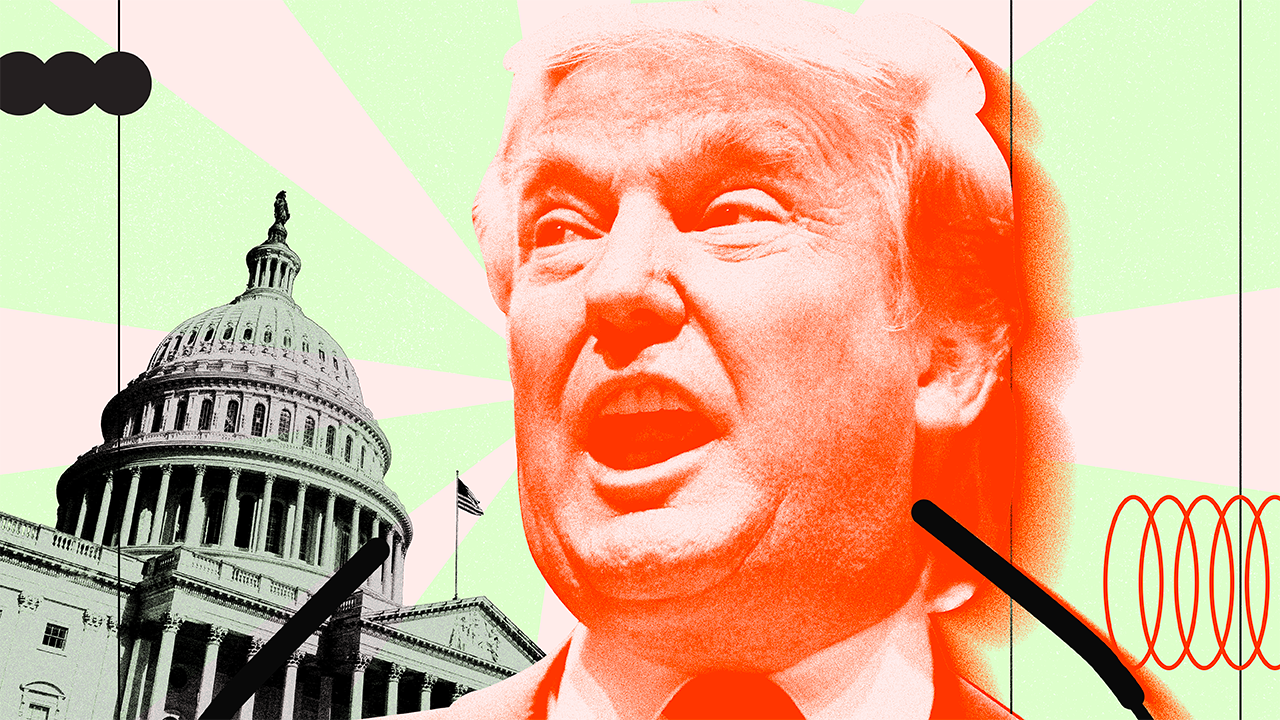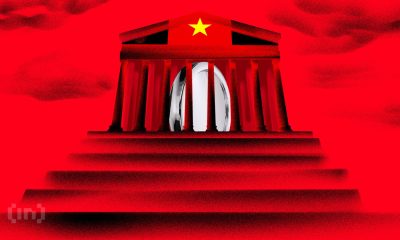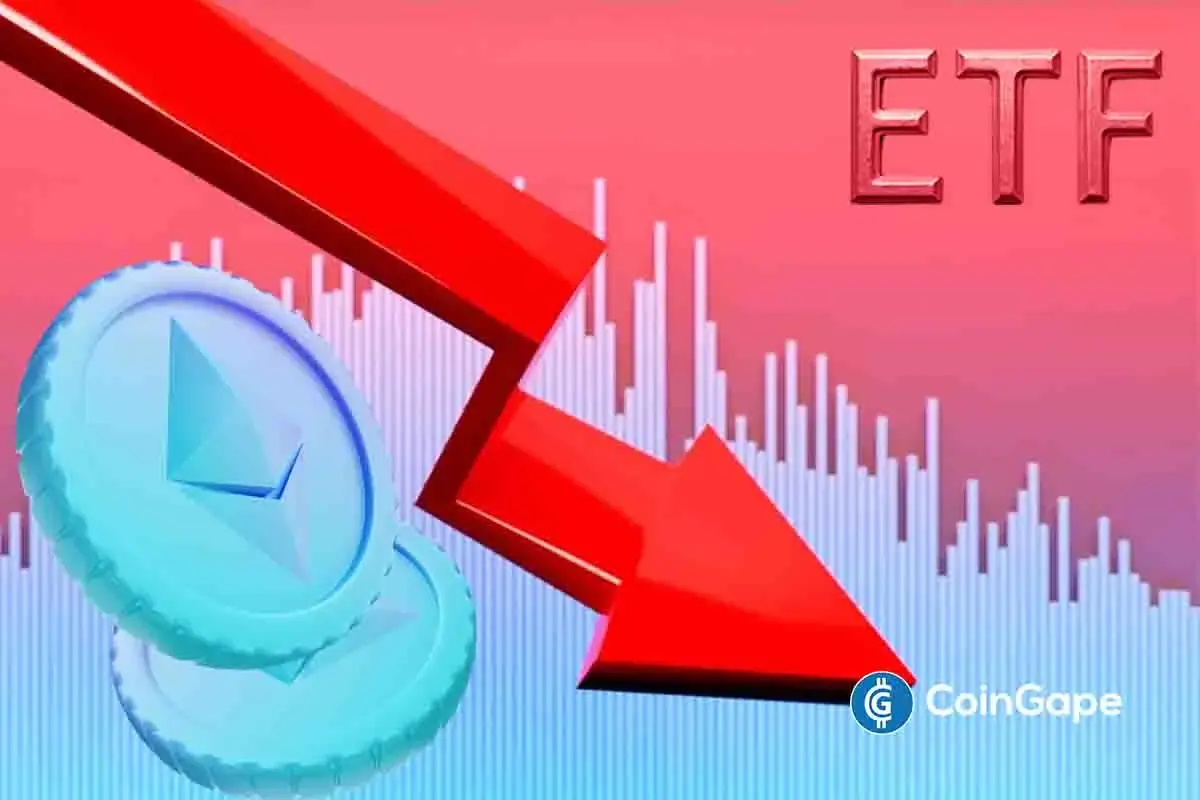Market
How Trump’s Tariffs Impact Crypto and Bitcoin’s Potential

Trump’s tariff policies shook the crypto market last week. Though countries like Mexico and Canada achieved a one-month postponement, tariffs on China have already been enacted.
BeInCrypto spoke with Kristian Haralampiev, Structured Products Lead at Nexo, to understand why Trump’s tariffs caused markets to panic, what the crypto markets should expect 30 days from now, and the areas where the industry could find opportunities.
Trump Tariff Announcements Shake Crypto Market
In the first week of February, US President Trump announced that he would impose a 25% tariff on imports from Canada and Mexico and a 10% tariff on Chinese goods. Additionally, he applied a 10% levy on Canadian energy resources.
These announcements triggered widespread reactions across traditional and crypto markets. Though these tariffs were said to be effective this Tuesday, global financial markets began selling off the prior weekend in preparation.
Though cryptocurrency markets are not inherently tied to trade deficits in the same way equities might be, they still took a significant hit. Following Trump’s tariffs announcements, the total crypto market capitalization contracted by approximately 8% in just one day– falling to about $3.2 trillion.
Bitcoin dropped to a minimum of $91,281, while Ethereum fell as low as $2,143. These fluctuations resulted in billions being wiped from the market. According to Coinglass, total liquidations exceeded $2.23 billion in a 24-hour period. No digital asset went unharmed.
A day before the executive orders were to take effect, Trump agreed to suspend the tariffs against Mexico and Canada for one month. However, China and the US did not reach a negotiation, and the US’s 10% levy on Chinese imports went into effect.
The crypto markets responded favorably to these postponements. XRP, which had dropped by over 25% in response to Trump’s tariff announcements, quickly jumped up 6% after news of the 30-day pause. Meanwhile, Bitcoin surged to $102,599, fueled by renewed investor optimism.
However, several questions remain about what will happen to the crypto market one month from now, when the threat of tariffs is again on the table.
Tariffs’ Impact on Economy Dynamics
Tariffs are taxes on imports or exports that governments use to achieve strategic goals such as trade deals or to reduce trade deficits.
Regarding Trump’s tariffs, the US imports more goods from Canada, Mexico, and China than it exports, meaning it faces a trade deficit with all three countries.
The connection between trade deficits and tariffs is important because of the potential consequences for equities and cryptocurrencies. Tariffs can increase the prices of imported goods, potentially leading to inflation as these costs are passed on to consumers.
In turn, higher costs may decrease consumer demand for those goods, resulting in reduced imports and lower profits for foreign companies, potentially leading them to withdraw from the US market.
Consequently, tariffs could raise foreign goods prices, decrease import volumes, and diminish corporate profits, incentivizing investors to reduce their equity holdings, seek less risky investments, and lower their exposure to cryptocurrency.
The cryptocurrency market’s decline following Trump’s announcements illustrates this phenomenon.
While cryptocurrency and equity markets sometimes exhibit independent behavior, significant events can create broader market disruptions, impacting seemingly unrelated assets due to prevailing market sentiment.
A Possible Opportunity for Crypto
Amidst considerable market volatility, a JPMorgan Chase survey of institutional trading clients found that 51% predict inflation and tariffs will be the dominant forces shaping global markets in 2025. The survey also highlighted market volatility as a major concern, cited by 41% of respondents, a significant increase from 28% in 2024.
However, some industry experts have pointed to a silver lining.
According to Haralampiev, Trump tariff policies, while likely to create volatility in cryptocurrency markets, may also present opportunities for Bitcoin’s long-term rise.
“The introduction of steep tariffs, particularly on Chinese imports, would likely disrupt global tradeflows, increase production costs, and contribute to inflationary pressures. Historically, such economic shifts have driven investors toward alternative assets that serve as hedges against currency devaluation and macroeconomic uncertainty. Cryptocurrencies, particularly Bitcoin, have increasingly been viewed as having this potential, hinting at bullish signals for the asset class,” Haralampiev told BeInCrypto.
In other words, as economic tensions escalate, Bitcoin’s ascent will accelerate.
“All of this could become a tailwind for Bitcoin and leading cryptocurrencies, as their decentralized nature could be viewed as an attractive proposition for investors. If inflation remains high, demand for assets that serve as a hedge —such as Bitcoin— could increase, especially if the US government keeps signaling a willingness to incorporate digital assets into its broader economic strategy,” Haralampiev added.
Even though Bitcoin could hedge against the inflation created by tariffs, these policies would also generate significant supply chain disruptions.
Trump’s 10% levies on China, which are already in effect, create significant uncertainty given the role of Chinese imports in activities like cryptocurrency mining.
Following Trump’s tariff announcements, the share prices of Bitcoin mining companies MARA, Riot Platforms, and Hut 8 declined, with losses exceeding 8% in some cases. These losses made sense, given that Chinese companies dominate the industrial Bitcoin mining equipment market.
American Bitcoin mining companies rely heavily on Chinese-manufactured Integrated Circuits for Specific Applications (ASIC) equipment, which is used to optimize the mining process. Bitmain and MicroBT are among the main suppliers.
“The US mining industry relies heavily on specialized mining hardware from China, meaning higher tariffs could significantly increase equipment costs. This would temporarily squeeze profit margins for miners and potentially slow mining expansion in the short term. Should tariffs drive up costs in the short term, US-based miners could look to further optimize operations, embrace emerging technologies like immersion cooling, or seek partnerships with domestic hardware manufacturers to maintain competitiveness,” Haralampiev explained.
Haralampiev also suggested that this disruption to a key part of the cryptocurrency mining supply chain should be a wake-up call to the industry.
The Need for Domestic Manufacturers
The crypto industry has long recognized the need for increased domestic Bitcoin mining in the United States to lessen dependence on foreign suppliers. This reliance on overseas products has been criticized for hindering decentralization and weakening supply chain resilience.
Some industry players have already taken initiatives to enhance efficiency in the Bitcoin mining field. Last June, Auradine, a Silicon Valley-based Bitcoin miner manufacturer, strategically partnered with virtual power plant providers CPower and Voltus.
Auradine is an American company that develops ASIC units engineered in the United States. These units help miners optimize electricity consumption, offering a competitive advantage. Auradine aims to provide performance and integration through this partnership without relying on third-party components.
Yet, several projects like Auradine are needed to compete with established Chinese suppliers and fulfill the demand for manufacturing equipment required for Bitcoin mining.
“By making foreign mining equipment more expensive, tariffs could encourage investment in domestic mining technology and energy-efficient solutions. The US already has a competitive advantage in renewable energy sources, particularly in states like Texas, which have abundant wind and solar power,” Haralampiev said.
The United States will need to implement a similar strategy for artificial intelligence (AI) development.
US Reliance on Outsourced Semiconductors
The United States and China are in a tight-knit race to dominate AI technologies. Semiconductors play an important in this race. These small but crucial components play a significant role in determining global technological leadership.
Semiconductors are fundamental to modern technology, forming the basis of virtually all electronic devices. They enable the development of increasingly powerful and energy-efficient systems that drive innovation across industries.
These components are critical for expeditiously and accurately processing massive datasets, particularly in AI and data analytics. They power applications from predictive analytics to natural language processing, enabling data-driven insights and decision-making.
According to data from the Observatory of Economic Complexity, in 2022, the United States ranked as the world’s third-largest importer of semiconductor devices, with imports totaling $16.6 billion. The leading suppliers of these imports were Vietnam ($4.57 billion), Malaysia ($2.13 billion), Thailand ($1.66 billion), South Korea ($1.54 billion), and China ($962 million).

US semiconductor imports increased by 13% in value during early 2023 despite ongoing efforts to boost domestic production, according to Trade Finance Global. This increase demonstrates the nation’s continued dependence on foreign chip suppliers.
With Trump enacting tariffs on China, investors are also worried about their impact on semiconductor imports.
A Call for US-based Innovation
Similar to his argument regarding Bitcoin mining, Haralampiev contends that the United States must significantly increase efforts to onshore semiconductor manufacturing.
“By strategically investing in local semiconductor manufacturing and mining hardware production, the U.S. could reduce its reliance on Chinese imports and make its crypto-mining industry more self-sufficient,” he said.
By doing so, tariffs would have less of an impact.
“The US is also looking at advancements in AI, which means its semiconductor industry will eventually catch up in terms of cost-production, where it could currently lack, solidifying the country’s dominance in both mining infrastructure and chip production,” Haralampiev added.
Though Trump has not made any announcements about semiconductor production, he has announced other AI-related initiatives.
Last month, Trump announced Stargate, a $500 billion joint venture between Oracle, SoftBank, and OpenAI, to build massive data centers and infrastructure that support AI development.
However, it is presently unclear how much the federal government will contribute to this massive sum and how much will come from Stargate’s constituent companies.
Weathering the Storm
While Trump’s tariff policies have generated concern, Haralampiev views them as part of a recurring pattern of similar past events in US history.
“This transition aligns with a broader historical cycle of globalization vs. isolationism, where economies shift between prioritizing global integration and domestic self-reliance,” he told BeInCrypto.
He also noted that crypto-related industries have weathered comparable challenges and ultimately prevailed.
“Bitcoin mining has historically proven to be highly adaptable in the face of policy shifts, such as China’s mining ban in 2021, which saw a rapid relocation of mining infrastructure to North America and Central Asia,” Haralampiev added.
Future economic scenarios are uncertain, but their potential impact on cryptocurrency markets is clear. Whether that impact is positive or negative will depend on how these scenarios develop.
Disclaimer
Following the Trust Project guidelines, this feature article presents opinions and perspectives from industry experts or individuals. BeInCrypto is dedicated to transparent reporting, but the views expressed in this article do not necessarily reflect those of BeInCrypto or its staff. Readers should verify information independently and consult with a professional before making decisions based on this content. Please note that our Terms and Conditions, Privacy Policy, and Disclaimers have been updated.
Market
Despite an 18% Drop, XRP’s Exchange Supply Hits Lows—Bullish Setup Ahead?

Reason to trust

Strict editorial policy that focuses on accuracy, relevance, and impartiality
Created by industry experts and meticulously reviewed
The highest standards in reporting and publishing
Strict editorial policy that focuses on accuracy, relevance, and impartiality
Morbi pretium leo et nisl aliquam mollis. Quisque arcu lorem, ultricies quis pellentesque nec, ullamcorper eu odio.
XRP has been trading under pressure in recent weeks, losing much of the momentum it built during its late 2024 to early 2025 rally. After reaching highs above $3.40, the asset has experienced an 18.3% decline over the past month, reflecting broader market softness.
At the time of writing, XRP trades significantly below its peak at a price of $2.06, with subdued investor activity and falling market participation across both spot and derivatives markets.
Related Reading
XRP On-Chain Activity Slows, But Price Remains Relatively Stable
Amid XRP’s decline, a CryptoQuant analyst known as EgyHash has recently shared his analysis on the altcoin in a post titled, “XRP’s Market Paradox: With Ledger Activity Dipping 80%, Is a Rebound on the Horizon?”
According to EgyHash, XRP’s on-chain and futures market data presents a mixed picture—declining activity but resilience in price. EgyHash noted that XRP Ledger activity has fallen sharply since December, with the percentage of active addresses down by 80%.
Similar declines have been observed in the futures market, where open interest has dropped roughly 70% from its highs, and funding rates have occasionally turned negative.

He added that the Estimated Leverage Ratio, which gauges average user leverage by comparing open interest to coin reserves, has also dropped significantly.
Despite these indicators pointing to weakening momentum, the altcoin’s price has only declined about 35% from its peak. This is a milder correction compared to other assets such as Ethereum, which has fallen roughly 60% over the same period.
Additionally, the altcoin’s Exchange Reserve has continued to decline, reaching levels last observed in July 2023. Lower reserves typically suggest that fewer tokens are available for immediate sale, a factor that can help support prices during market downturns.

According to EgyHash, this trend, along with relatively stable pricing, could indicate growing long-term confidence in the asset.
Institutional Developments Could Strengthen Market Sentiment
While on-chain metrics remain a focus, institutional developments may also play a role in shaping XRP’s future trajectory. Hong Kong-based investment firm HashKey Capital recently announced the launch of the HashKey XRP Tracker Fund—the first XRP-focused investment vehicle in Asia.
Backed by Ripple as the anchor investor, the fund is expected to transition into an exchange-traded fund (ETF) in the future. The initiative is designed to attract more institutional capital into the XRP ecosystem.
HashKey Capital is launching Asia’s first XRP Tracker Fund—with @Ripple as an early investor.
This marks a major step in expanding institutional access to XRP, the third-largest token by market cap. 🧵👇
— HashKey Capital (@HashKey_Capital) April 18, 2025
HashKey Capital has also indicated that this collaboration with Ripple could lead to further projects, including tokenized investment products and decentralized finance (DeFi) solutions.
Related Reading
Vivien Wong, a partner at HashKey, emphasized the strategic value of integrating Ripple’s network with regulated investment infrastructure across Asia.
Although the altcoin faces near-term pressure, long-term developments, including decreasing exchange reserves and rising institutional interest, may support its recovery as the broader market stabilizes.
Featured image created with DALL-E, Chart from TradingView
Market
Matchain’s Petrix Barbosa Talks the Future of Digital Identity


In an engaging session during Paris Blockchain Week, BeInCrypto caught up with Petrix Barbosa, the innovative mind behind Matchain, a blockchain venture that’s reshaping how digital identity and data sovereignty are approached.
Barbosa, who transitioned from a successful career as a venture capitalist, where he managed investments across 250 projects, brings a wealth of experience and a unique perspective to the blockchain landscape. Petrix Barbosa’s insights reveal a compelling vision for the future of blockchain, focusing on user empowerment and innovative use of technology to solve enduring problems in digital identity and data management.
Petrix Barbosa Discusses Matchain and its Mission
Matchain is a layer 2 blockchain platform that primarily addresses the challenges of identity and data sovereignty. Our mission is to empower users by giving them control over their digital identities and data, thus ensuring that they’re the primary beneficiaries of their online presence.
Barbosa on His Pivot from Venture Capital
In my time as an investor, I witnessed many great ideas fail to reach their potential due to the lack of a substantial user base or poor market timing. This inspired me to transition from funding projects to creating a platform that not only serves my vision but also provides tangible solutions to widespread issues in the blockchain community—primarily, user engagement and application.
Matchain’s Innovations in the Area of Identity Sovereignty
Matchain introduces a novel approach to managing digital identity. Unlike traditional models where user data is siloed across various platforms, Matchain allows users to have a single digital identity that spans across both Web2 and Web3. This is crucial for enabling a seamless transition and interaction between these two worlds.
How Matchain Integrates Existing Web2 Infrastructure
Our platform acts as a bridge between the decentralized ecosystem of Web3 and the more traditional Web2 infrastructure. By allowing users to manage their digital identities across both platforms, we facilitate a smoother interaction that enhances user experience while maintaining high security and trust.
Future Developments From Matchain
Looking ahead, we aim to expand our user base significantly. Currently, we are backed by strategic partnerships, like the one with Paris Saint-Germain, which not only broadens our exposure but also integrates our technology into mainstream applications.
In the next two years, we plan to onboard millions of users, leveraging our innovative solutions to enhance their digital interactions.
Barbosa on Unique Challenges in Developing Matchain
The biggest challenge was shifting the focus from simply creating a blockchain solution to ensuring it was user-centric and capable of addressing real-world problems. This involved integrating AI to manage and analyze data effectively, ensuring that our platform could deliver personalized and contextually relevant experiences to users.
Matchain Over the Next Five Years
In five years, I envision Matchain at the forefront of blockchain technology, leading the charge in digital identity management and data sovereignty. Our platform will likely become a critical tool for users and companies looking to navigate the complexities of the digital age securely and efficiently.
Disclaimer
In compliance with the Trust Project guidelines, this opinion article presents the author’s perspective and may not necessarily reflect the views of BeInCrypto. BeInCrypto remains committed to transparent reporting and upholding the highest standards of journalism. Readers are advised to verify information independently and consult with a professional before making decisions based on this content. Please note that our Terms and Conditions, Privacy Policy, and Disclaimers have been updated.
Market
Base Launches Strong, But Content Coins Draw Doubt

Content Coins are a new trend gaining attention in the crypto space, especially on Base. They are positioned as digital content with value driven by culture and virality. Supporters see them as a new form of expression.
Critics say they’re just meme coins with a different name. Base is pushing the idea forward, hoping it helps the chain stand out from the rest.
Are Content Coins Really Different From Meme Coins?
Content coins are a new concept gaining traction within crypto communities, especially on Base chain. According to Base founder Jesse Pollak, a content coin “represents a single piece of content,” with the core idea being that the coin is the content and the content is the coin — no more, no less.
These tokens are often created in a specific context, either on platforms like Zora.
Essentially, creators design them to function as standalone pieces of digital content, driving the token’s value through cultural impact, virality, or meme-worthiness—rather than any utility or fundamental backing.

Despite the growing popularity of the term, not everyone is convinced. User Kash (@kashdhanda) dismissed the label, saying, “contentcoins are a silly name for memecoins”. He also pointed out that “memecoins are actually closer to financial content than they are to finance.”
David Tso (@davidtsocy), who works at Base, brings a more supportive spin, comparing content coins to “Instagram posts and TikToks that show their value in real time.”
Is Base Is For Everyone Just Another Meme Coin?
Base is for everyone was the first content coin officially launched and promoted by Base. It made an explosive debut, with a market cap nearing $18 million within its first few hours.
Shortly after its peak, the token plummeted nearly 75%. Since then, it has shown signs of recovery, with its market cap now hovering around $9.6 million.
The coin has gained significant traction in terms of activity, currently boasting nearly 21,000 holders, over 29,000 transactions in the last 24 hours, and a daily trading volume close to $9 million.

Base is using this momentum to push a broader narrative: that all content should live on-chain. Base is actively leveraging this philosophy, framing content coins as a new form of internet-native expression where each token represents a piece of digital culture stored permanently on the blockchain.
Yet, despite this push, Base is for everyone remains the only content coin to break out meaningfully—most others haven’t crossed the $100,000 market cap threshold. While the concept aims to separate itself from typical meme coins by embedding value in cultural relevance rather than pure speculation, many remain unconvinced.
Critics argue that content coins are merely meme coins in new packaging. Still, if the trend takes off, it could position Base to outperform other chains like Solana. It would do this by capturing this narrative and driving unique user activity to its ecosystem.
Disclaimer
In line with the Trust Project guidelines, this price analysis article is for informational purposes only and should not be considered financial or investment advice. BeInCrypto is committed to accurate, unbiased reporting, but market conditions are subject to change without notice. Always conduct your own research and consult with a professional before making any financial decisions. Please note that our Terms and Conditions, Privacy Policy, and Disclaimers have been updated.
-

 Market11 hours ago
Market11 hours agoPi Network Roadmap Frustrates Users Over Missing Timeline
-

 Market10 hours ago
Market10 hours agoSolana (SOL) Price Rises 13% But Fails to Break $136 Resistance
-

 Market23 hours ago
Market23 hours agoVietnam Partners with Bybit to Launch Legal Crypto Exchange
-

 Market22 hours ago
Market22 hours ago100 Million Tokens Could Trigger Decline
-

 Altcoin19 hours ago
Altcoin19 hours agoEthereum ETFs Record $32M Weekly Outflow; ETH Price Crash To $1.1K Imminent?
-

 Ethereum18 hours ago
Ethereum18 hours agoEthereum Price Stalls In Tight Range – Big Price Move Incoming?
-

 Market17 hours ago
Market17 hours agoHow $31 Trillion in US Bonds Could Impact Crypto Markets in 2025
-

 Altcoin22 hours ago
Altcoin22 hours agoRipple CEO Brad Garlinghouse Drives XRP’s Global Expansion; Know How



















